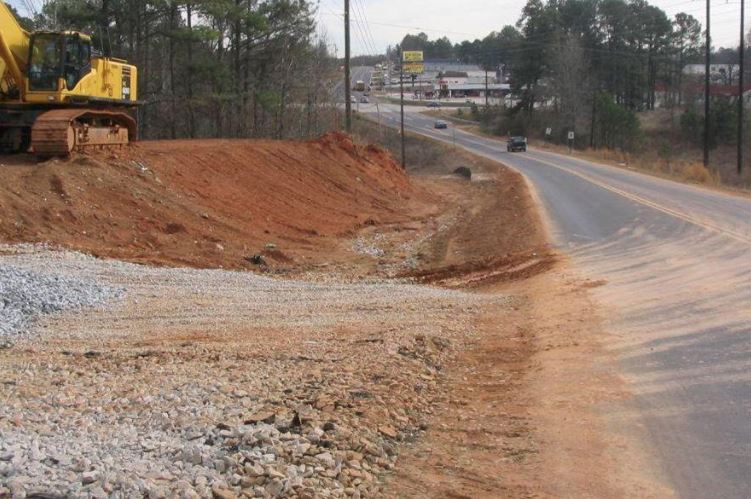The Soil Erosion and Sediment Control Standards are a suite of design practices used by engineers and architects to develop “erosion control plans” which are reviewed by local soil conservation districts. The current Standards, revised in 2017, contain 32 practices. Ten focus on the establishment of vegetation as a means to stabilize soil after disturbance, and twenty-two address either temporary or permanent control measures for the safe conveyance of runoff offsite and downstream of the site. Read more about the Standards on the NJ Department of Agriculture website, or scroll below.
Use these links to skip down the page to the section that interests you:
Below are some descriptions and images for proper and improper use of common erosion control measures seen construction sites.
View Our Posts About Soil Erosion & Sediment ControlThe purpose of the sediment barrier is to intercept and detain small amounts of sediment from unprotected areas of limited extent. The sediment barrier is used when no other practice is feasible, there is no concentration of water in a channel or other drainage way above the barrier and erosion would occur in the form of sheet or rill erosion.

Definition: A stabilized pad of clean crushed stone located at points where traffic will be accessing a construction site. The purpose of a stabilized construction access is to reduce the tracking or flowing of sediment onto paved roadways (or other impervious surfaces).

Definition: A temporary barrier and settling facility installed at a storm sewer inlet. The purpose of the storm sewer inlet protection is to intercept and retain sediment, thus preventing the entrance of sediment into the storm sewer system.
Wrapping the inlet in filter fabric is an example of improper inlet protection. The fabric often closes off the inlet and cannot easily be removed and cleaned for maintenance. These often tear and sediment falls directly into the inlet.


Organizing a shoreline restoration project is a great way to rebuild an erosion damaged shoreline and enhance the natural stability of an area along the water. Recycled materials such as tires, rocks and wood create a strong barrier for a shoreline that could normally suffer the impacts of erosion due to wave and wind damage.
This photo is a successful shoreline erosion project in Island Heights, New Jersey. This was put in place through a partnership of organizations including the Ocean County Soil Conservation District. This project proved so successful that it even stood up to the strong impacts of Superstorm Sandy in 2012.


Another effective technique used for soil erosion control is erosion control matting. Erosion control matting, as seen in this image, is laid on top of loose soil and is secured into place. The matting remains in this location until native vegetation can begin to grow through, and does no harm to the environment. Erosion control mats provide the strength and surface area needed to protect an area from erosion or runoff.

In accordance with P.L. 2010, Chapter 113, the State Soil Conservation Committee has revised its Standards for Soil Erosion and Sediment Control in New Jersey.
Standards now include provisions for mitigating the negative impacts of soil compaction on construction sites subject to review and regulation by the New Jersey Soil Erosion and Sediment Control Act, N.J.S.A. 4:24-39, et seq.
These provisions have been included within Sections 8 (Topsoiling) and 19 (Land Grading) of the Standards. (http://www.nj.gov/agriculture/divisions/anr/nrc/njerosion.html)
Effective December 7th, 2017, any application submitted to a local Soil Conservation District for erosion and sediment control plan certification must include provisions to mitigate potential soil compaction in accordance with the revised Standards. Previously certified Soil Erosion and Sediment Control Plans, plans eligible for re-certification and minor revisions are not subject to the adopted amendments. There are 11 identified exceptions outlined on page 19-2 of the Land Grading Standard.